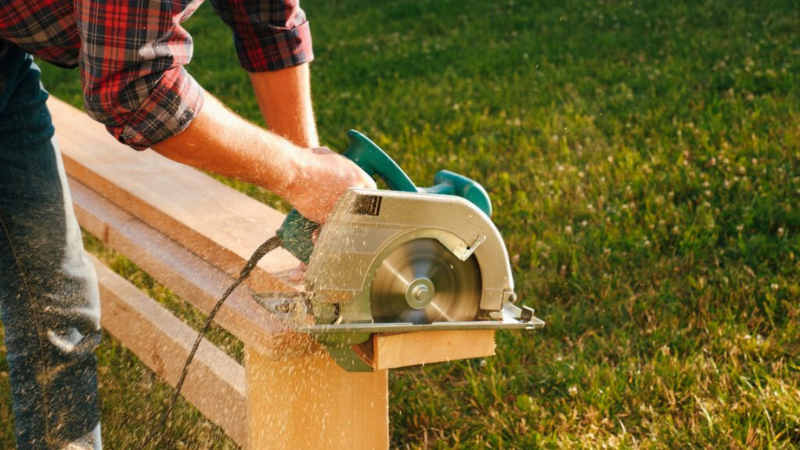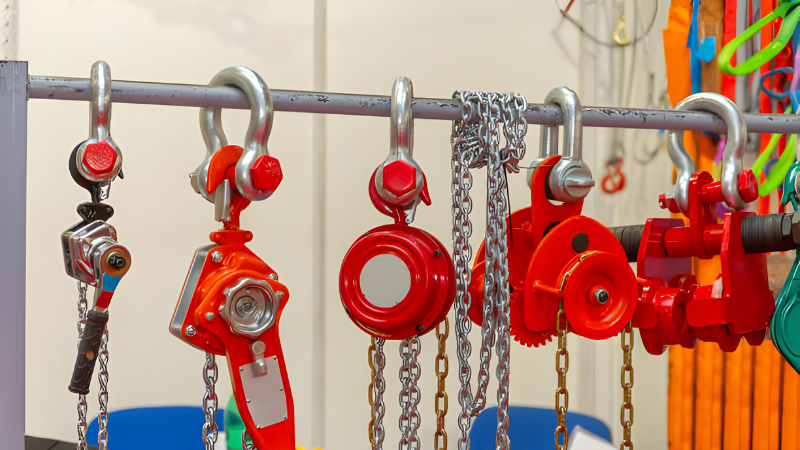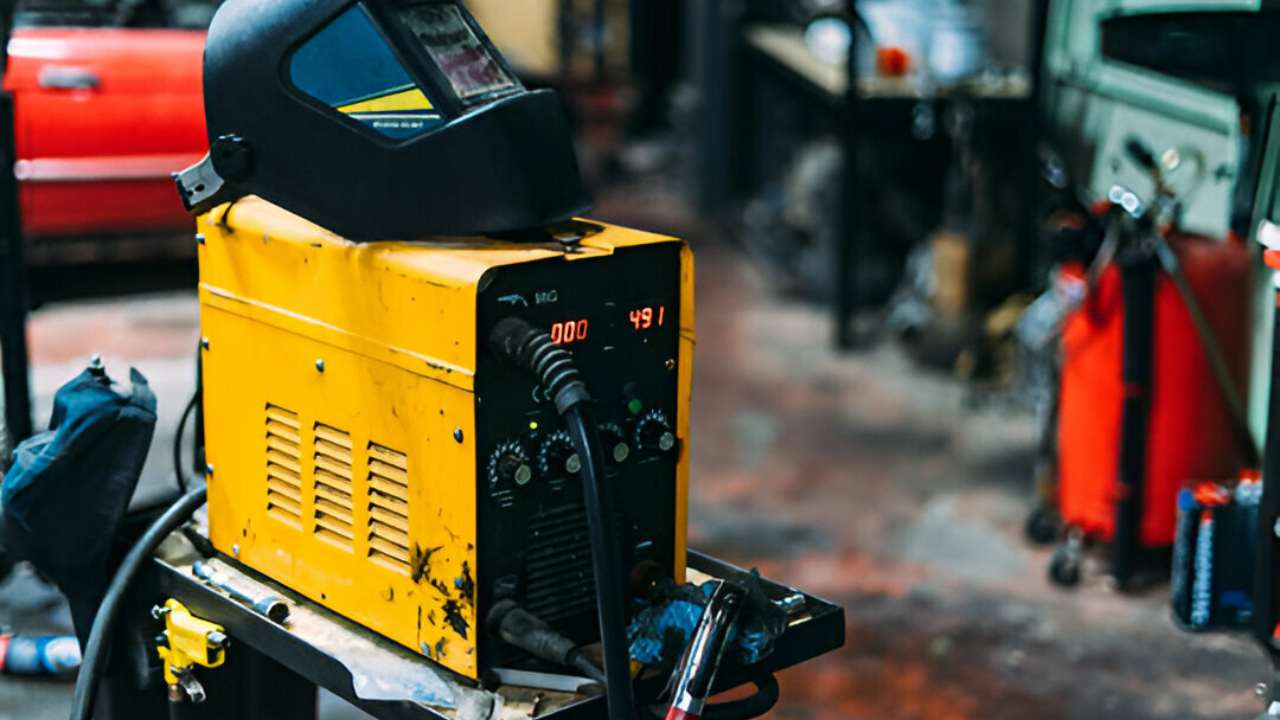Circular saws are the unsung heroes of the workshop when making clean, precise cuts through various materials. These power tools are a must-have for DIY enthusiasts and professionals alike.
Whether you're slicing through timber, plywood, or even tiles, circular saws are ideal. With the right blade, you can even cut through metals. If you want one, here are the best options in Australia.
Our Top Picks
Here are the top three circular saws available in Australia:

Makita DHS680Z Circular Saw
Best overall circular saw with a lithium-ion brushless motor, cooling air outlet, dual-LED lights, and maximum cut depth of 41 mm at 45°.

Bosch CSW41 Worm Drive
Best robust and lightweight circular saw with a 15-amp motor, a 10 cm blade length, and a left-side blade design for comfort and control.

Ryobi P507 Circular Saw
Best budget circular saw with a 5 cm blade length, cutting angles up to 56°, bevel adjustment knob, and left-side blade orientation.
7 Circular Saws for Aussies
We reviewed each circular saw, evaluating their performance, strength, and safety and determining whether they are compatible with other tools. This helped us recommend reliable and efficient options for both DIYers and professionals.
1. Makita DHS680Z Circular Saw
Best Overall Circular Saw

When we tried the Makita 165 mm 18 V Li-ion LXT Circular DHS630Z Saw, we found a tool that seemed ready for just about any challenge. Its weight, just 3.4 kg, allowed us to manoeuvre it quite easily, no matter the angle or position we were cutting from. It felt balanced and lightweight, characteristics that should alleviate fatigue from prolonged use.
For safety, we were impressed with the cooling air outlet, which kept our working area comfortable and the cutting point clear of any debris. Likewise, the electric brake was an indispensable feature during our trials, promptly stopping the blade and potentially preventing accidents.
Being a part of the Makita 18V LXT system, the power tool seamlessly integrates with other existing collections of Makita tools, which we found to be a time (and space) saver in our workshop.

Thanks to the dual-LED lights integrated into the saw, working in a dimly lit garage was no problem. The cordless convenience also meant we could move freely, reaching spots and angles that wouldn't have been possible with a corded saw. The circular saw uses Lithium-Ion Brushless Motors, which charge in just 22 minutes with a DC18RC charger.
However, it’s worth noting that the package didn't include batteries, so you have to get them separately. Thankfully, we already used the Makita system, so we had a couple at our disposal. Also, we found the maximum cut depth of 41mm at 45 degrees to be limiting for some specific applications, restricting us from taking on more substantial, thicker materials.
Pros
- Cordless device
- Lightweight and maneuverable
- Integrated dual-LED lights
- Safety features
Cons
- Batteries sold separately
- Limited cutting depth
2. Bosch CSW41 Worm Drive Circular Saw
Best for Comfort and Control

The first thing we noticed while testing the Bosch CSW41 Worm Drive 7-1/4-Inch Circular Saw was the smoothness and control afforded by the precision worm drive design. It allowed us to make cuts with a higher level of accuracy. Crafted with a magnesium housing, Bosch's circular saw is both robust and lightweight, reducing fatigue during extended use.
The effortlessness extended to making adjustments, too. The easy-to-access bevel adjustment and metal depth levers meant we could swiftly modify settings, which was particularly helpful for projects requiring multiple cuts. You also get the powerful 15-amp motor capable of slicing through various materials; we could feel the ample torque this motor produced.
To improve precision, the saw has a left-side blade design, which significantly enhances visibility on the cut line—we made more accurate cuts with less effort. On the downside, it has a noticeably heavy trigger tension, which is a bother during more extended projects. Likewise, the tool comes with no batteries, which means an extra expense if you don't own any.
Pros
- Precision worm drive
- Lightweight magnesium construction
- Bevel and depth adjustments
- High-powered 15-amp motor
- Enhanced visibility
Cons
- Batteries not included
- Higher trigger tension
3. Bosch Professional Cordless Saw
Best Portable and Convenient Circular Saw

The Bosch Professional 18V System Cordless 06016A2200 Circular GKS Saw is built for tough jobs, handling them with ease thanks to its strong design. In our tests, it performed well on rooftops and scaffolds. The built-in LED light was beneficial for precise work in low-light areas.
Battery life can often be a make or break for cordless tools. The former is valid for the Bosch's 06016A2200 saw, powered by two 5.0 Ah batteries with superior heat management that offer extended service life and a noticeably longer runtime. The compact dimension and minimal weight of 3.29 kg make the tool comfortable even with demanding tasks.
It's worth mentioning that Bosch's precision control with variable cutting depth settings may not satisfy as a deep cutter for specialised jobs. Plus, while we appreciate the flexibility in blade placement — a feature that caters to both left and right-handed users — there's the additional cost of purchasing batteries as they aren't included in the package.
Pros
- Integrated LED
- Durable construction
- Compact, lightweight design
- Effective battery heat management
- Flexible blade placement
Cons
- Limited maximum cutting depth
- Battery not included
4. Evolution Multi-Material R185CCSX Circular Saw
Best Circular Saw for Precision Cutting

The Evolution Multi-Material Circular Saw has an 185-mm Japanese tungsten carbide-tipped blade that cuts steel, wood, aluminium, plastic, and more. We enjoyed the smooth and effortless operation of the powerful 1600W motor and optimised gearbox, ensuring consistent and reliable power. The multi-material circular saw also has an adjustable cutting depth of up to 64 mm and a bevel capacity ranging from 0° to 45°.
Evolution's circular saw has ergonomic, soft-grip handles for maximum versatility, precision, and control. It delivers clean cuts with minimal heat, sparks, or burrs. The electric brake also helps stop the blade within seconds for extra safety, and an integrated vacuum port plays a pivotal role in maintaining a clean and dust-free workspace.
Despite its many benefits, the noise level generated during its operation is notably high, so you'll need hearing protection. Likewise, its bulkier build compared to some counterparts slightly hampered portability.
Pros
- Single-blade multi-material cutting
- Adjustable cutting depth and bevel capacity
- Powerful 1600W motor
Cons
- Requires hearing protection
- Slightly bulkier than other models
- Corded design limits mobility
5. WORX XL WX427 WORXSAW
Best Portable Circular Saw

The WORX XL 710W WX427 is a professional-grade power tool for different applications, like cutting wood, tile, metal, plasterboard, brick, and stone, thanks to the potent 710W motor. It's compact enough to cut objects with only one hand. In like manner, this model has an ergonomic design and a slim inline grip for easy and comfortable manoeuvrability.
For precision and performance, the saw doesn't disappoint. Its built-in laser guide helped maintain accuracy even in poorly lit environments. The bevel lever added to the delight, making angle adjustments quick and hassle-free, whether it was a straight cut or a precise 45-degree angle that was on the agenda for the day. The circular saw is made even safer, thanks to the blade guard keeping your hands safe, and the spindle lock ensures everything works correctly. So, you can use the saw with less worry about accidents.
As much as the corded nature of this saw ensures a constant power supply, alleviating concerns of the battery running out in the middle of a task, it comes with its challenges. The presence of a power cord introduces a trip hazard, demanding extra vigilance during operation. Nonetheless, the continuous power supply provided by the corded design ensured an uninterrupted workflow, a feature that many would appreciate.
Pros
- One-handed operation
- Plunge-cutting capability
- Comfortable ergonomic design
- Powerful 710W motor
- Built-in laser guide
Cons
- Corded, not cordless
- Potential tripping hazard
6. Bosch 12 Cordless Universal Circular Saw
Best Durable Circular Saw

For an effective and long-lasting circular saw, go for the Bosch 12 Cordless Universal Circular Saw. It has a spindle lock for quick and convenient blade exchange and an ergonomic handle with improved control and guidance for a firm grip and ease of movement. It also has a PowerLight LED for optimum cutting-line view even at night.
We found the adjustable cutting depth feature a genuine asset during our evaluation. It allowed us to modify the depth according to the specific demands of the woodworking project at hand. Combined with the Syneon chip, this ensures optimised performance. The parallel guide also came in handy for straight and precise cuts, especially for wooden materials.
The Bosch 12 Cordless Universal Circular Saw, with its high-quality blade and various features, weighs 1.4 kg, making it easy to handle and portable, providing effortless woodworking jobs.
Pros
- Cordless tool
- Adjustable cutting depth
- Built-in PowerLight LED
- Intelligent Syneon chip
- Ergonomic handle
Cons
- Battery-dependent
- Not for strong materials
7. Ryobi P507 Circular Saw
Best Budget Circular Saw

The Ryobi P507 Circular Saw packs the reliability of a full-size circular saw into a compact and user-friendly tool. It features a bevel adjustment knob and a handy little tool that found its utility in many of our projects, allowing for various cutting angles up to 56 degrees. Crafted from rigid ABS plastic, the circular saw promises durability while maintaining a lightweight stature.
Ryobi's P507 onboard guiding base was a standout feature, allowing a level of precision in our cuts that we truly appreciated. Likewise, adjusting it to maintain control with both hands on the tool felt natural, with a degree of safety and accuracy. The adjustment process was also relatively simple, with the knob being conveniently located on the side.
The P507 Circular Saw promises compatibility and versatility thanks to its seamless synchronisation with Ryobi's 18V battery system, which includes lithium-ion and NiCad options. This means you can use batteries from other Ryobi tools. The left-side blade orientation also offers a better line of sight for a more natural and intuitive cutting experience.
Pros
- Compact, lightweight design
- Durable ABS plastic construction
- Comfortable, firm grip with rubber handle
- Compatible with Ryobi's 18V battery system
- 56-degree bevel adjustment
Cons
- Slight blade guard resistance
- Missing advanced features
Our Testing Process

Let's examine how we rigorously evaluated the circular saw models we discussed. We aim to give you the inside scoop on our testing criteria and procedures.
- First and foremost, safety is paramount. Before any cutting commenced, we ensured that all safety precautions were in place. Protective gear, from eye shields to ear defenders, was donned to safeguard against potential hazards.
- Then came the practical tests. We put these circular saws through their paces on a variety of materials, including timber of various densities and thicknesses, dense metals, and challenging plastics. The goal? To assess their cutting prowess across different scenarios.
- We meticulously observed cutting precision, the ease of adjustment for different angles and depths, and the tools' ability to maintain steady performance. Noise levels and any peculiarities in operation were also noted, ensuring you get the full picture.
- Now, let's talk results. Our evaluation process factored in the saw's power, cutting capabilities, and user-friendliness. It's crucial to note that these assessments were conducted by experienced hands, ensuring an informed perspective.
We carefully tested each circular saw to give you detailed insights. When we recommend a saw, it’s because it performed exceptionally well in our tests. You can trust our recommendations to make an informed choice for your projects.
What to Look for When Buying a Circular Saw

Here, we break down what to look for when purchasing a circular saw, helping you make an informed decision.
#1 - Power and Performance
The first thing to assess is the saw's power and performance. Circular saws come in various motor sizes, typically measured in watts or amps. A more powerful motor will easily handle more rigid materials. Consider the types of projects you'll undertake to determine the appropriate power level for your needs.
#2 - Blade Size and Type
The blade size and type are crucial aspects to evaluate. Blades vary in diameter, and the choice should align with the depth and type of cuts you'll be making. Additionally, consider the material you'll predominantly work with—different blades cater to wood, metal, or multi-material cutting.
#3 - Cutting Depth and Angles
The saw's cutting depth and ability to adjust angles are vital features. Check the maximum cutting depth at 90 degrees and its capacity for bevel cuts. A versatile saw that can handle various cutting angles and depths offers greater flexibility.
#4 - Ergonomics and Comfort
Comfort matters during extended use. Assess the saw's ergonomics, grip, and weight distribution. An ergonomic design ensures a comfortable and secure hold, reducing fatigue during prolonged projects.
#5 - Safety Features
Safety should always be a top priority. Look for saws with safety features like blade guards, electric brakes, and trigger locks. These elements minimise the risk of accidents and ensure safe operation.
#6 - Dust Management
Effective dust management is essential for maintaining a clean workspace and protecting health. Circular saws with built-in dust ports or compatibility with external dust extraction systems are preferable, especially for indoor projects.
Consider these factors carefully, and you'll be well-equipped to choose the perfect circular confidently saw to tackle your woodworking or construction tasks.
Various Types of Circular Saws
There are many types of circular saws for specific tasks and preferences. We explore these types of circular saws to help you understand their unique features and applications.
- Sidewinder Circular Saws: Also known as in-line saws, they are the most common type you'll come across. They feature a motor positioned parallel to the blade, making them compact and lightweight. Sidewinders are known for their maneuverability and versatility, making them ideal for general-purpose cutting tasks.
- Worm Drive Circular Saws: These types are distinguished by their gearbox design, where the motor is set at a right angle to the blade. This configuration offers greater torque, making them suitable for heavy-duty applications. They're favoured by professionals for tasks like framing and roof construction.
- Hypoid Circular Saws: Hypoid circular saws are similar to worm drive saws but use a hypoid gear system, which allows for efficient power transfer. They are known for their durability and ability to handle demanding cuts. These saws are a preferred choice for carpenters and contractors working on demanding job sites.
- Compact Circular Saws: Often referred to as mini circular saws, they are designed for portability and precision. They are smaller and lighter than standard circular saws, making them suitable for tight spaces and detail-oriented work. DIY enthusiasts and hobbyists appreciate their ease of use.
- Track Saws: Track saws, also known as plunge saws, are equipped with a guide rail system that ensures straight and precise cuts. These saws excel at cutting large panels, making them a top choice For carpenters, cabinet makers, and anyone requiring clean and accurate cuts in sheet materials.
- Mitre Saws with Circular Blades: Miter saws are commonly associated with their circular blade cousins. While not technically circular saws, mitre saws use circular blades to create angled and bevelled cuts with exceptional precision. They are indispensable for tasks like framing, trim work, and crown moulding installation.
Each type of circular saw has unique advantages and is suited to specific applications. Understanding these variations will help you select the right tool for your woodworking, construction, or DIY projects.
Corded vs. Cordless Circular Saws

Circular saws come in two primary forms: corded and cordless. Corded circular saws require a power supply to operate, while cordless circular saws are powered by a rechargeable lithium-ion battery.
Cordless saws are suitable for work in congested spaces, while corded circular saws work best in open spaces. The choice between these two hinges on your individual preferences and needs. Corded saws offer unwavering power, while cordless models grant the freedom to roam.
Safety Guidelines When Using a Circular Saw
When operating a circular saw, prioritising safety is paramount to prevent accidents and injuries. Here are some essential safety guidelines to follow:
- Wear safety gear like goggles, hearing protection, and a dust mask.
- Inspect the saw for damage, ensure the blade guard works, and check that the blade is sharp and secure.
- Secure the workpiece with clamps or a vice to prevent shifting and ensure precise cuts.
- Keep your workspace clean, well-lit, and free of tripping hazards for safer operation.
- Choose the right blade for the material to ensure efficient and safe cutting.
- Follow the manufacturer’s instructions for safe and proper use of your circular saw.
- Keep hands and body away from the blade and use push sticks when needed.
- Wait for the blade to stop completely before lifting the saw or removing debris.
- Disconnect the saw from power after use to prevent accidental starts.
- Keep children and bystanders out of the work area for everyone’s safety.
Frequently Asked Questions (FAQs)
Here are some frequently asked questions about using and maintaining circular saws.
What is a circular saw used for?
Circular saws are versatile power tools commonly used for cutting a variety of materials, including wood, plywood, MDF, plastics, and sometimes even metal. They are essential for tasks like framing, carpentry, woodworking, and construction.
What are the two types of circular saws?
There are primarily two types of circular saws:
- Sidewinder Circular Saw: Also known as an in-line or direct-drive circular saw, these saws have a motor parallel to the blade, making them compact and lightweight. They are ideal for general cutting tasks.
- Worm Drive Circular Saw: These saws have the motor at a right angle to the blade, with a gear mechanism (hence "worm drive") for added torque and power. They are preferred for heavy-duty and demanding applications, such as cutting thick lumber and sheet goods.
What are the four types of circular saw blades?
Circular saw blades come in various types designed for specific materials and cutting tasks:
- Rip-Cut Blade: Designed for making lengthwise cuts along the wood grain.
- Cross-Cut Blade: Ideal for cutting across the wood grain, providing smoother and cleaner cuts.
- Combination Blade: Versatile blades suitable for both rip cuts and cross cuts.
- Specialty Blades: These include blades designed for cutting materials like metal, concrete, ceramics, and more. They have specific tooth configurations and materials for each material type.
Can a circular saw cut metal?
Yes, circular saws can cut metal, but it requires the appropriate blade. To cut metal effectively and safely, you should use a metal-cutting circular saw blade with specialised teeth designed for the specific type of metal you're cutting. Additionally, some circular saws are better suited for metal cutting, such as those with higher RPMs and more robust motors.

The Final Cut
After carefully reviewing each product we discussed, we are confident they are the best on the market.
These circular saws are designed to handle various materials, including wood, PVC, and non-ferrous metals like aluminium and copper.
Consider the abovementioned factors and your use case to choose the one that best suits your needs.








